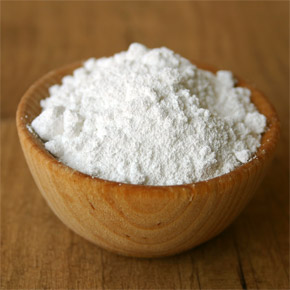Stronger than Kevlar: Plastic Reinforced with Nanocellulose Fibers from Pineapples!
Image courtesy arilourdes.wordpress.com
The scientists are using nanocellulose fibers from bananas, pineapples and other plants to create plastic that is 3-4 times stronger than petroleum-based plastics, and 30% lighter. Not only that, nanocellulosic plastic is better at resisting heat, chemicals, and water. The material reportedly rivals Kevlar in strength, but in contrast with that lovely chest-protecting substance, it’s renewable and biodegradable. The Brazilian researchers believe that within a few years nanocellulosic plastics will enjoy widespread adoption.
To make nanocellulose, the researchers take cellulose, a familiar substance that provides the structure of the cell walls of green plants, and processes it to the point where “50,000 [fibers] fit within the diameter of a human hair” (Squatiglia). The best source for the fibers has been pineapples, although bananas, coconut shells, agave and curaua, a plant related to pineapple, have also proved workable. The researchers take the leaves and stems of the plants and heat them in a device similar to a pressure cooker, yielding a fine powder resembling talc. The fibers can be added to other raw materials to produce reinforced plastic, and could even be combined with petroleum-based plastic if a specific application required it, although the product would not biodegrade.
Image courtesy howei.com
The plastic is expensive to produce, but the cost would come down dramatically if the plastic were adopted by automobile manufacturers and other industrial systems. Right now, one pound of nanocellulose can produce 100 pounds of plastic (Squatiglia). While I haven’t been able to find out whether the researchers have tried to make nanocellulose with Tulip leaves, I guess this year the joke is on me!
I have filed nanocellulosic plastic under wood and earth.
Cited:
Squatiglia, Chuck. “Bananas Could Make Cars Leaner, Greener.” Wired Online. 03/28/11. Accessed 04/20/11. URL.

















[…] more information, see http://www.architerials.com/2011/04/stronger-than-kevlar-plastic-reinforced-with-nanocellulose-fiber… by sw472 on April 30th, 2011 | Category: […]
Amazing article! How cool would it be to see natural, strong materials such as this become a component to actual structure construction?
Leave a Wordpress Comment:
Ads
Watch ARCHITERIALS Videos on vimeo
Like on Facebook
Twitter
Flickr
Hit Counter
Ads
Blogs
Green
Journals/Publications
Materials
Network/News
Offices/People
Resources
Science
Pages
Archive
RSS and Email Subscriptions
Tag Cloud
3D 3D printer AB FAB academic acid acrylic actuated matter adaptive adhesive adsorption aerogel air air conditioning alloy aluminum amnh antibacterial antifungal ants april fool's architecture architecture robot artificial skin autonomous aviation awesome bacteria bamboo bananas beer bench bend bending biennale biocomputing biodegradable biodegradeable biomaterials biomimetics biomimicry biominerals biopolymer birds blast blast-resistant block blocks blogs Bloom Box brazil brick bubbles bucky bulk metallic glass butterfly calera canvas carbon carbon fiber carbon nanotubes carpet cars ceiling cellulose cement ceramic chain link chair charcoal charlie sheen chemicals chiller clay cloth cloud cmu coils color color-changing communication compound computer concrete condensation conducting conductive context cool coral cracks crystal cyborg demakersvan design digifab dirt disaster dna dror drywall dutch dynamic EAP earth ecocradle ecolect e coli ecology ecoresin ecovative elastic electric electricity electrochromic electroluminescent electronic energy energy recovery environment evaporative cooling experiment fabric fabrication facade fiber fiberglass fiber optic fiber optics fibers film FIRE flexible flickr fly ash foam fungus furniture garbage gel geodesic dome geometry gfrp gilgamesh glass glass fiber glow glue gold graphene green greensulate gsapp gypsum hard heat heavy heidi klum helix hemp hexagon hidden high performance hive honeybee humidity ice India ink insulation interference Internet inventables invisible invisible ink jello jellyfish just add water kevlar kinetic korea lace lamboo laser lattice leaves LED leed LEGO light light emitting light transmitting liquid lo mein london Loop.pH machines magic magnetic marine material materials meatball melting memory metabolic engineering METAL metal panel metamaterial micro microsensor microtools military milk MIT moisture multi-layer mushrooms mycelium nano nanogel nanotech nanotubes NASA new noise non-metallic oil OLED OMA ostrich oysters packaging paint panel panels paper paperfoam paraffin wax particles particulates petroleum phase change phosphorescent pink PLA plastic platinum pm-10 poetry pollution polymer polymers porcelain power precast printed printing protein public quadror radiant rain rammed earth reclaimed recycled reflective refracting Rem Koolhaas resin robot robotics roof rubber rugged sand sealant sealer search segmented self-healing sensor shape memory silica silicon silk skin skittles slats smog soft solar solar cell solar cells solar paint solid solid state lighting sound spider spider glue spray stabilized sand stone stretch stretchable strong structural structure studio dror sun sunglasses super supercritical sustainable switzerland tags tape technology TED tensile TEXAS textile textiles texture thermal thermochromatic thin thin film thread tiger stone tile tiles timber tio2 tires toaster tokujin yoshioka touch touch-sensitive toxic transparent t shirts tulip ultra-thin university of akron university of connecticut upcycling virus voc wall wallpaper WATER web wet whale wires WOOD woodwool wool workshop
WP Cumulus Flash tag cloud by Roy Tanck and Luke Morton requires Flash Player 9 or better.
Recent Comments
Ads